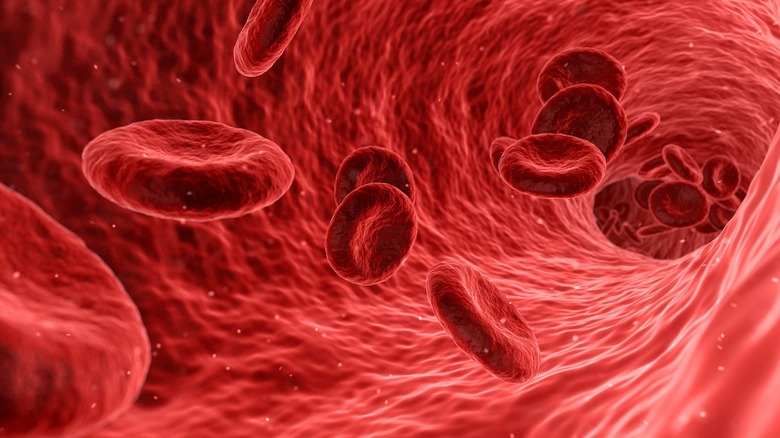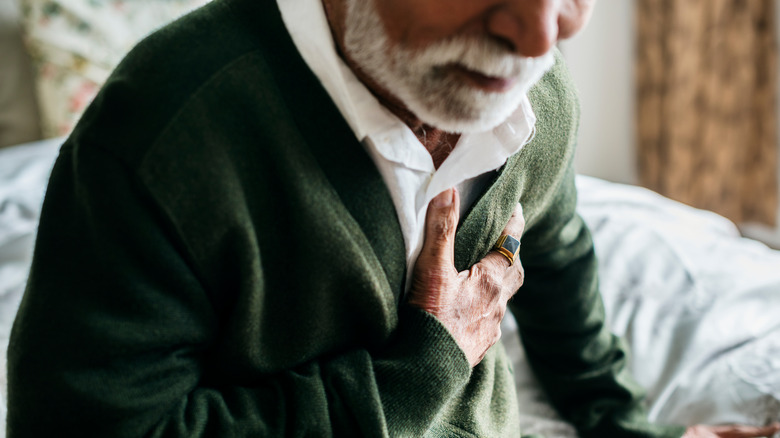How Are Blood Clots Treated?
Blood clots are a dangerous, and often undetected, threat, claiming an average of 274 lives every day, approximately one every six minutes (via the National Blood Clot Alliance). Additionally, blood clots are responsible for 100,000 to 300,000 deaths every year, surpassing the yearly death tolls of breast cancer, AIDS, and motor vehicle crashes combined.
The National Heart, Lung, and Blood Institute says that clotting is a normal process for blood, and occurs when a blood vessel is damaged and platelets are sent from the spleen to the injury site. These platelets become sticky and form a clot, allowing the bleeding to stop while your immune system begins to repair the injury. Problems with clots arise when one forms without an obvious injury, or when they do not dissolve on their own once the injury has healed (via the American Society of Hematology).
For example, the Mayo Clinic points out that if a clot forms in one of the major veins, such as in the leg, and remains there, it can lead to a condition known as deep vein thrombosis (DVT). In some cases of DVT, the clot can break free and travel to the lungs and cause a pulmonary embolism. With these factors in mind, it's clear blood clots can present serious risks, and any indication of them should be treated immediately.
How do you know if you have a blood clot?
Blood clots can be difficult to detect, because it is possible for them to present with no apparent symptoms. In some cases, the symptoms that they do have are common enough to be mistaken for something else (via Healthline).
Nevertheless, there are certain symptoms you should pay attention to, especially if you have recently been hospitalized or have been immobile for an extended time, such as bed rest or lengthy travel (via the Centers for Disease Control and Prevention). These symptoms include swelling or redness in the arms or legs, difficulty breathing, an irregular or faster than normal heartbeat, and chest pain or discomfort, which can worsen with coughing or deep breathing.
If your doctor does diagnose a blood clot, the goal will be to keep the clot from getting larger and also to keep it from breaking off and traveling to the lungs (via the Mayo Clinic). In the case of DVT, your doctor may prescribe blood thinners or thrombolytics (also called clot busters). In the absence of medication, your doctor may consider a vena cava filter. Placed in your abdomen, this filter will prevent any clot that breaks loose from getting to your lungs. In more serious cases, catheter-directed treatments or surgical intervention may be necessary (via Johns Hopkins Medicine).
How to prevent blood clots
While blood clots can affect anyone, there are certain people who may be in more danger than others. If you are overweight or use tobacco or vape products, have a family history of blood clots, or are over 55, you may be at risk (via the National Blood Clot Alliance).
According to Cleveland Clinic, engaging in regular physical activity, quitting (or not starting) smoking, staying hydrated, maintaining a healthy weight, and controlling medical conditions such as diabetes and high blood pressure are all helpful in preventing the formation of clots. Additionally, the Agency for Healthcare Research and Quality says there are little things you can do throughout the day to keep your blood flowing and prevent clots from forming. These include changing your sitting position often, particularly during long trips; not remaining standing or sitting for more than one hour at a time; not using pillows under your knees; and occasionally raising your legs six inches above your heart.
The good news about blood clots is that, for all of their dangers, they are one of the most preventable blood conditions (via the American Society of Hematology). If you feel you're at risk for blood clots, whether as a result of genetics or lifestyle, it's best to consult your doctor and let them know your history. The sooner you know your risks, the sooner you can get out in front of blood clots, and hopefully stop them before they become a threat.



